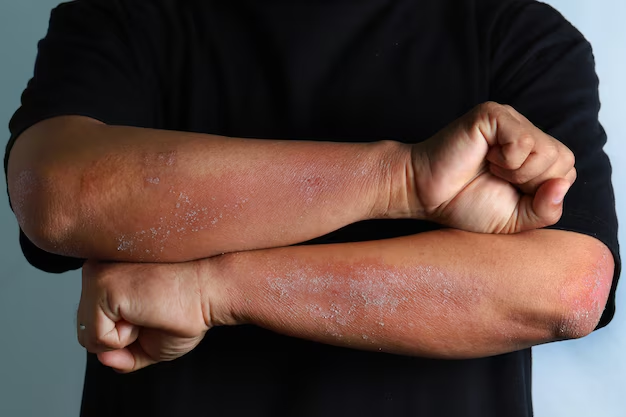Understanding Shingles: What You Need to Know About This Often Misunderstood Disease
Imagine waking up one morning with a strange tingling sensation on your skin. You think it might be a rash, but it's accompanied by a burning pain. This is how many people first encounter shingles, a disease that, while often associated with older age, can affect anyone who has had chickenpox. It's essential to understand this condition, its causes, symptoms, and potential complications, as well as preventive measures you can take.
H2: What is Shingles?
Shingles, scientifically known as herpes zoster, is a viral infection that results in a painful rash. This condition is caused by the varicella-zoster virus, the same virus responsible for chickenpox. After you've had chickenpox, the virus remains dormant in your nerve tissue and can reactivate years later as shingles.
H3: How Does Shingles Develop?
The reactivation of the varicella-zoster virus occurs when the body's immune defenses are lowered, which can be due to stress, age, or a compromised immune system. Once reactivated, the virus travels along nerve pathways, leading to inflammation and rash.
H2: Symptoms and Signs of Shingles
Shingles typically presents itself in stages, starting with early symptoms before the well-known rash appears.
H3: Early Symptoms
- Pain, burning, or tingling, often on one side of the body
- Sensitivity to touch
- Itching
H3: Rash and Blisters
After a few days, a red rash develops, typically appearing as a stripe of blisters that wraps around either the left or right side of the torso. The rash may also appear on one side of the face, neck, or sometimes in or around one eye.
H3: Other Symptoms
- Fever
- Headache
- Fatigue
- Sensitivity to light
H2: Who is at Risk?
While anyone who has had chickenpox can develop shingles, certain factors increase the risk:
- Age: Those over 50 are more likely to experience shingles.
- Weakened immune systems: Individuals with conditions such as HIV/AIDS or cancer are at an increased risk.
- Stress: High stress levels may contribute to the reactivation of the virus.
- Medical treatments: Chemotherapy and certain medications can weaken the immune system.
H2: Potential Complications
Shingles can lead to severe complications, even though not everyone experiences them:
H3: Postherpetic Neuralgia (PHN)
The most common complication, PHN, causes persistent nerve pain in the area where the rash occurred, lasting long after the rash has healed. This condition can be debilitating, affecting daily activities and quality of life.
H3: Vision Problems
If shingles affects the eye (ophthalmic shingles), it can lead to severe eye pain, vision loss, or even permanent eye damage.
H3: Skin Infections
Shingles blisters can become infected, leading to bacterial skin infections, which might require additional medical treatment.
H3: Neurological Problems
In rare cases, shingles can lead to inflammation of the brain (encephalitis), facial paralysis, or hearing or balance problems.
H2: Treatment Options
While there is no cure for shingles, treatments can lessen the severity and duration of symptoms and reduce the risk of complications.
H3: Antiviral Medications
Early treatment with antiviral drugs like acyclovir, valacyclovir, or famciclovir can help speed healing and reduce the risk of complications.
H3: Pain Management
- Over-the-counter pain relievers: Such as acetaminophen or ibuprofen can help manage mild pain.
- Prescription pain medications: For severe pain, a doctor might prescribe stronger painkillers.
- Topical treatments: Capsaicin cream and prescription patches like lidocaine can provide localized relief.
H3: Other Therapies
- Corticosteroids might be prescribed to reduce swelling and pain.
- Antidepressants or anticonvulsants: Sometimes used for nerve pain relief.
H2: Prevention: The Role of Vaccination
The most effective way to prevent shingles and its complications is through vaccination.
H3: Shingles Vaccine
Two vaccines, Shingrix and Zostavax, are available for shingles prevention:
- Shingrix: Recommended for adults 50 and older, even if they’ve had shingles before. It's a newer, more effective vaccine, administered in two doses.
- Zostavax: Used less frequently, primarily for those allergic to Shingrix.
H3: Benefits of Vaccination
- Reduces the risk of shingles and its complications
- Decreases the severity of symptoms for those who do develop shingles
H2: Living with Shingles: Tips for Managing Daily Life
For those dealing with shingles or its aftermath, managing day-to-day life can be challenging. Here are some strategies to consider:
H3: Practical Tips
- Keep the rash clean and dry: To prevent infection.
- Wear loose, comfortable clothing: Minimizes irritation.
- Cool compresses: To soothe itchy skin and reduce pain.
H3: Emotional Well-being
Dealing with pain and inflammation can take a toll on mental health. Stress-relief techniques such as meditation, deep breathing exercises, and talking to a therapist or support group can be beneficial.
The Bigger Picture: Understanding the Impact of Shingles
Shingles affects about one million people every year in the United States alone. Understanding this disease is crucial, especially for those at higher risk. By recognizing symptoms early, pursuing timely treatment, and considering vaccination, the impact of shingles can be significantly reduced.
As you become more informed about shingles, you're empowered to make choices that safeguard your health and well-being. Remember, understanding your body's signals and knowing when to seek professional advice can make all the difference in managing shingles effectively.
Quick Recap: Key Insights on Shingles Disease 🧐
- What It Is: Shingles is a painful rash caused by the reactivation of the varicella-zoster virus.
- Symptoms to Watch: Pain, rash, blisters, fever, headache.
- At-Risk Groups: Older adults, those with weakened immune systems, high stress, or those undergoing certain medical treatments.
- Complications: Can include persistent pain, vision problems, and skin infections.
- Prevention: Vaccines like Shingrix are highly recommended.
- If Affected: Early antiviral treatment and pain management are crucial.
- Daily Management: Clean rashes, comfortable clothing, and stress-relief strategies.
